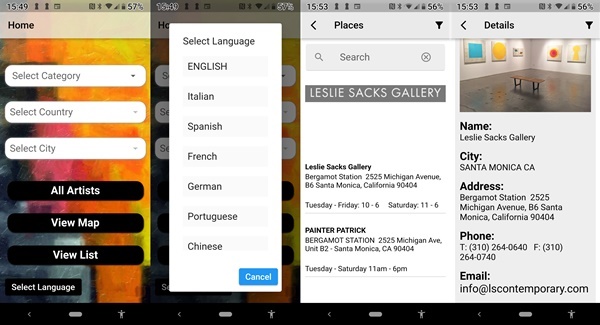"booth L15"
Adip Dutta, Alexandra Bachzetsis, Ayesha Sultana, Bhasha Chakrabarti, Praneet Soi, Radhika Khimji, Rathin Barman, Sohrab Hura

experimenter
2/1 Hindusthan Road Kolkata 700029 IndiaP: +91 33-46026457 e-mail:
Multiple location : Kolkata(2)



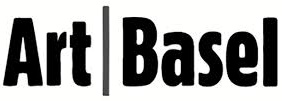
Art Basel
Messe Basel Messeplatz 10 4005 Basel Switzerland+41 79 739 35 38 e-mail:
June 15 > 18, 2023
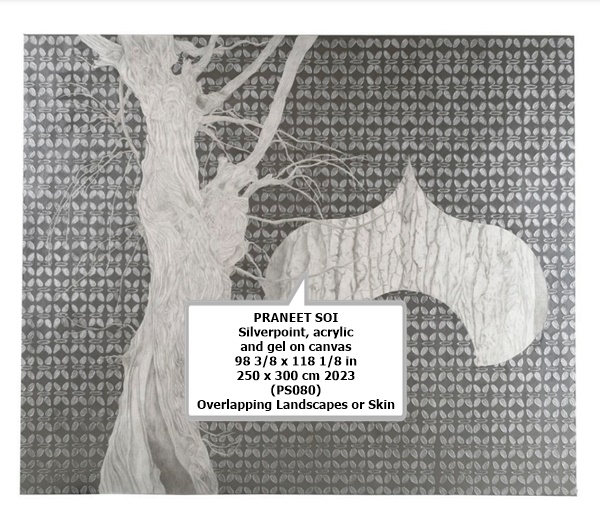
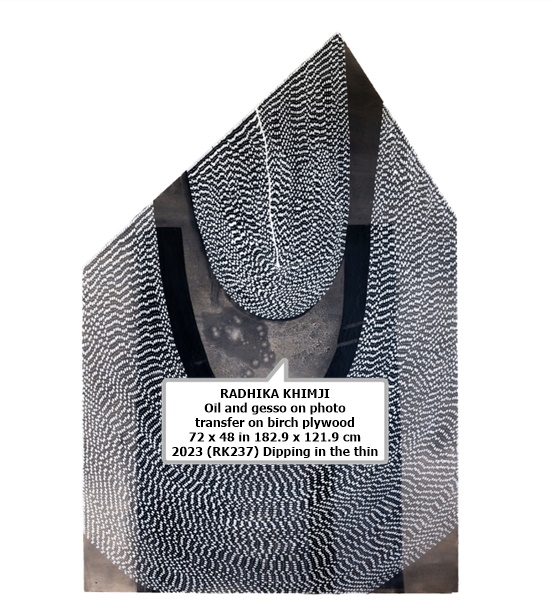
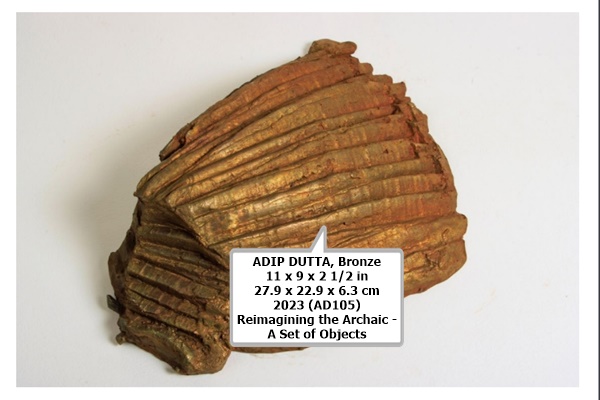
booth L15
Experimenter presents Off Plane View, a group exhibition that keeps landscape, form, architecture and the body at its core, expanding ways of seeing and experiencing our built and natural environments.
The exhibition includes works by Adip Dutta, Alexandra Bachzetsis, Bhasha Chakrabarti, Praneet Soi, Radhika Khimji, Rathin Barman, and Sohrab Hura.
Over several years Adip Dutta (b. 1970; lives and works in Kolkata) has immersed himself in the nightscape of the city, relooking at the sculpturality of form left behind in empty spaces of bustling footpaths, wares sold on streets tightly packed with tarpaulin and discarded items of daily use – sculpting them in a variety of mediums. Often, he sculpts trees and fallen branches in bronze in an extension of his exploration of form, but also as witnesses to his ethereal vision of the nightscape where the objects lie as mortal remains as well as desires for the vital and the regenerative. Evident in the bronze sculptures of wrapped goods and remnants of our surroundings, is Dutta’s gaze that invites the viewer to renew value, we assign as a society, to objects that are every day and occupy our field of vision and in which the city remains intrinsic to their being. Dutta will be showing a new body of work titled Reimagining the Archaic - A Set of Objects, a set of bronze sculptures, as part of our presentation at Art Basel this year.
Included in the presentation are prints of performers from Alexandra Bachzetsis’s (b. 1974, lives and works in Zurich, Switzerland) performance Perfect, which depicts Bachzetsis and her co-performers, dressed in high heels, blue jeans and a white t-shirt, in a setting that suggests a photo studio. They repeat movements that refer to everyday gestures as well as references to fitness exercises or dance elements. The performance extracts choreographic movements from different cinematic or photographic scenes, such as from Jane Fonda’s workout videos to the ritualised confines of femininity, transforming culturally codified gestures into an abstract language that is degenerated and re-assembled, repeated and interrupted, to create a new vocabulary of movement. The disruptions in the performance posit a questioning of self-presentation through their continuous posing in front of the camera while dealing with body images, representation, and the male gaze.
Bhasha Chakrabarti (b. 1991; lives and works in New Haven, Connecticut) explores the bond between women across generations and the intimate connection between such relationships through used clothing and fabric in her works. Chakrabarti presents two new oil paintings, which portray her friend Shoshana and her mother Monica. They also feature a pattern of a saree that belonged to Shoshana’s grandmother, thus bringing three generations of women together in a single painting. The surface of the painting comprises felted textiles of clothing used by the women thus reflecting upon fabric as intimate portraits of people. Bhasha will also be showing Palimpsest, a Kantha quilt made using old clothing belonging to Bhasha and the previous generations of women in her family, sewed together with scrap/fabric waste taken from Rashmi Varma’s studio. It indicates a conglomeration of high fashion detritus and the traditional Kantha quilting practice from Bengal that reveals the private, domestic space of a bedroom, thus oscillating between the public and the private, between ‘fine-art’ and ‘craft’.
Praneet Soi (b. 1971; lives and works in Amsterdam, Netherlands) presents two new paintings that explore the overlap of different landscapes he inhabits. In one, an oak tree, situated in the dune landscape north of Amsterdam has been depicted, its branches beautifully sculpted by the ocean climate. In both the works trees are laid out upon a silver background in which a pattern has been applied in low relief, allowing for a changing play of light as the viewer moves past the canvas, thus encapsulating within them a sense of temporality echoed by the silverpoint technique that details the trees, which is permanent and will oxidise gently over time, gradually turning warmer. The pattern, archaeologically termed an egg and dart motif, harks to queen Miran Zain’s tomb, dating back to 1430, located in Srinagar, where he also came across the patterned window grills that form the avian shape within which a bark is detailed, once again in silverpoint. Thus the works may be considered a tapestry in which the personal and the historical intertwine.
Searching for a place between architecture and gesture, house and structure, Radhika Khimji’s (b. 1979; lives and works between Muscat and London) new work Dipping in the thin details a tension between the formal attributes of sharp corners and soft curves, a body and a drape, a bust and macrocosm. Khimji is looking for a way to describe body and place in the layered labour of mark making while she thinks of the surface of the plywood support as a porous place, at once at the outer limit of the work, and also a portal to an inner lower excavation exploring bodily sensation without depicting a likenesses. There is a dichotomy between the desire to live on the surface of the picture, presented as an abstracted landscape with hundreds of dots and oblong shapes, and the allusion to other places, cosmic spheres and inner worlds. It is this dipping in and out of different dimensions and surfaces, that engages Khimji to manifest a sensuous gesture of contradiction.
Rathin Barman (b. 1981; lives and works in Kolkata) presents Intersected Space that highlights his gaze at details of buildings and the multiplicities of their architectural intricacies, such as windows, trellises and grilles while exploring the endless possibilities a space can entail through charcoal dissections on a concrete base, reflecting upon human intervention upon built environments. Barman also presents Partition I and Partition II, concrete reliefs with brass appendages, which present an architectural rendering of a grand colonial mansion in North Kolkata, that has been divided amongst its proprietors. Through this work, Barman portrays a precise conjunction of the disembodiment of the built form and the simultaneous renewal of future possibilities while providing a sense of holding aloft a delicate equilibrium of opposing yet symbiotic pulls between their many planes.
Sohrab Hura’s (b. 1981; lives and works in New Delhi) series of soft pastel drawings Things Felt But Not Quite Expressed are testaments to his yearning for softness and the fluid malleability of the process and the medium owing to the numbness he felt towards the harsh permanence of photography during a time of personal loss and ailment. Hura’s exploration in image making through drawing is underscored by his tendency to reflect upon the social and the political through everyday ordinariness underscored by love, joy, relationships and the familial. His immediate space also includes animals while the significance of title texts, tempering the tone of the images, creates a parallel between this body of work with the format of a photobook.
The exhibition binds dyads of private-public, interior-exterior, singular-multiple perspectives employing them as lenses to view our world.
Experimenter presents Off Plane View, a group exhibition that keeps landscape, form, architecture and the body at its core, expanding ways of seeing and experiencing our built and natural environments.
The exhibition includes works by Adip Dutta, Alexandra Bachzetsis, Bhasha Chakrabarti, Praneet Soi, Radhika Khimji, Rathin Barman, and Sohrab Hura.
Over several years Adip Dutta (b. 1970; lives and works in Kolkata) has immersed himself in the nightscape of the city, relooking at the sculpturality of form left behind in empty spaces of bustling footpaths, wares sold on streets tightly packed with tarpaulin and discarded items of daily use – sculpting them in a variety of mediums. Often, he sculpts trees and fallen branches in bronze in an extension of his exploration of form, but also as witnesses to his ethereal vision of the nightscape where the objects lie as mortal remains as well as desires for the vital and the regenerative. Evident in the bronze sculptures of wrapped goods and remnants of our surroundings, is Dutta’s gaze that invites the viewer to renew value, we assign as a society, to objects that are every day and occupy our field of vision and in which the city remains intrinsic to their being. Dutta will be showing a new body of work titled Reimagining the Archaic - A Set of Objects, a set of bronze sculptures, as part of our presentation at Art Basel this year.
Included in the presentation are prints of performers from Alexandra Bachzetsis’s (b. 1974, lives and works in Zurich, Switzerland) performance Perfect, which depicts Bachzetsis and her co-performers, dressed in high heels, blue jeans and a white t-shirt, in a setting that suggests a photo studio. They repeat movements that refer to everyday gestures as well as references to fitness exercises or dance elements. The performance extracts choreographic movements from different cinematic or photographic scenes, such as from Jane Fonda’s workout videos to the ritualised confines of femininity, transforming culturally codified gestures into an abstract language that is degenerated and re-assembled, repeated and interrupted, to create a new vocabulary of movement. The disruptions in the performance posit a questioning of self-presentation through their continuous posing in front of the camera while dealing with body images, representation, and the male gaze.
Bhasha Chakrabarti (b. 1991; lives and works in New Haven, Connecticut) explores the bond between women across generations and the intimate connection between such relationships through used clothing and fabric in her works. Chakrabarti presents two new oil paintings, which portray her friend Shoshana and her mother Monica. They also feature a pattern of a saree that belonged to Shoshana’s grandmother, thus bringing three generations of women together in a single painting. The surface of the painting comprises felted textiles of clothing used by the women thus reflecting upon fabric as intimate portraits of people. Bhasha will also be showing Palimpsest, a Kantha quilt made using old clothing belonging to Bhasha and the previous generations of women in her family, sewed together with scrap/fabric waste taken from Rashmi Varma’s studio. It indicates a conglomeration of high fashion detritus and the traditional Kantha quilting practice from Bengal that reveals the private, domestic space of a bedroom, thus oscillating between the public and the private, between ‘fine-art’ and ‘craft’.
Praneet Soi (b. 1971; lives and works in Amsterdam, Netherlands) presents two new paintings that explore the overlap of different landscapes he inhabits. In one, an oak tree, situated in the dune landscape north of Amsterdam has been depicted, its branches beautifully sculpted by the ocean climate. In both the works trees are laid out upon a silver background in which a pattern has been applied in low relief, allowing for a changing play of light as the viewer moves past the canvas, thus encapsulating within them a sense of temporality echoed by the silverpoint technique that details the trees, which is permanent and will oxidise gently over time, gradually turning warmer. The pattern, archaeologically termed an egg and dart motif, harks to queen Miran Zain’s tomb, dating back to 1430, located in Srinagar, where he also came across the patterned window grills that form the avian shape within which a bark is detailed, once again in silverpoint. Thus the works may be considered a tapestry in which the personal and the historical intertwine.
Searching for a place between architecture and gesture, house and structure, Radhika Khimji’s (b. 1979; lives and works between Muscat and London) new work Dipping in the thin details a tension between the formal attributes of sharp corners and soft curves, a body and a drape, a bust and macrocosm. Khimji is looking for a way to describe body and place in the layered labour of mark making while she thinks of the surface of the plywood support as a porous place, at once at the outer limit of the work, and also a portal to an inner lower excavation exploring bodily sensation without depicting a likenesses. There is a dichotomy between the desire to live on the surface of the picture, presented as an abstracted landscape with hundreds of dots and oblong shapes, and the allusion to other places, cosmic spheres and inner worlds. It is this dipping in and out of different dimensions and surfaces, that engages Khimji to manifest a sensuous gesture of contradiction.
Rathin Barman (b. 1981; lives and works in Kolkata) presents Intersected Space that highlights his gaze at details of buildings and the multiplicities of their architectural intricacies, such as windows, trellises and grilles while exploring the endless possibilities a space can entail through charcoal dissections on a concrete base, reflecting upon human intervention upon built environments. Barman also presents Partition I and Partition II, concrete reliefs with brass appendages, which present an architectural rendering of a grand colonial mansion in North Kolkata, that has been divided amongst its proprietors. Through this work, Barman portrays a precise conjunction of the disembodiment of the built form and the simultaneous renewal of future possibilities while providing a sense of holding aloft a delicate equilibrium of opposing yet symbiotic pulls between their many planes.
Sohrab Hura’s (b. 1981; lives and works in New Delhi) series of soft pastel drawings Things Felt But Not Quite Expressed are testaments to his yearning for softness and the fluid malleability of the process and the medium owing to the numbness he felt towards the harsh permanence of photography during a time of personal loss and ailment. Hura’s exploration in image making through drawing is underscored by his tendency to reflect upon the social and the political through everyday ordinariness underscored by love, joy, relationships and the familial. His immediate space also includes animals while the significance of title texts, tempering the tone of the images, creates a parallel between this body of work with the format of a photobook.
The exhibition binds dyads of private-public, interior-exterior, singular-multiple perspectives employing them as lenses to view our world.
 | Adip Dutta | |
 | Alexandra Bachzetsis | |
 | Ayesha Sultana | |
 | Bhasha Chakrabarti | |
 | Praneet Soi | |
 | Radhika Khimji | |
 | Rathin Barman | |
 | Sohrab Hura | |
Unlimited Opening (by invitation only)
Monday, June 12: 4pm to 8pm, First Choice VIP cardholders
Monday, June 12: 6pm to 8pm, Preview VIP cardholders
Parcours Opening
Monday, June 12: 1pm to 8pm
Tuesday, June 13 – Friday, June 16: 10am to 8pm
Saturday, June 17: 10am to 11pm (Parcours Night 6pm to 11pm)
Sunday, June 18: 10am to 7pm
VIP Days (by invitation only)
Tuesday, June 13: 11am to 8pm, First Choice VIP cardholders
Tuesday, June 13: 4pm to 8pm, Preview VIP cardholders
Wednesday, June 14: 11am to 8pm
Vernissage (by invitation only)
Wednesday, June 14: 5pm to 8pm
mpefm
SWITZERLAND fair art press release
Public Days
Thursday, June 15: 11am to 7pm
Friday, June 16: 11am to 7pm
Saturday, June 17: 11am to 7pm
Sunday, June 18: 11am to 7pm
Special Nights
Unlimited Night: Thursday, June 15: 7pm to 10pm
Parcours Night: Saturday, June 17: 6pm to 11pm
TICKETS
Day Ticket
Admission for one person valid on June 15, 16, 17 or 18.
Including a ticket for public transportation within Basel*.
CHF67.00
Friends Ticket
3 admissions at a reduced price valid on Thursday, June 15, 16, 17 or 18.
Including a ticket per person for public transportation within Basel*.
CHF62.00
Permanent Ticket
Admission for one person on all days from June 15 - June 18, 11am – 7pm
CHF230.00
Art Basel & Design Miami Combination Ticket
Admission for one person.
Valid for Art Basel on June 15, 16, 17 or 18
Valid for Design Miami on 13, 14, 15, 16, 17 or 18.
Both shows do not need to be visited on the same day.
Including a ticket for public transportation within Basel*.
CHF97.00
After Work Ticket
Admission for one person valid on June 15 or 16, between 5pm -7pm.
CHF35.00
Vernissage+ Card
Admission for one person. Access on VIP Day Wednesday, June 14 to Unlimited, Hall 1, 11am to 8pm and Vernissage, Hall 2, 5pm to 8pm.
Including a ticket for public transportation within Basel*
CHF150.00
Online Buy Ticket
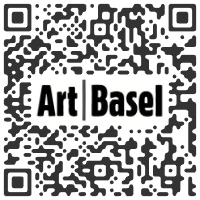
Public Days
Thursday, June 15: 11am to 7pm
Friday, June 16: 11am to 7pm
Saturday, June 17: 11am to 7pm
Sunday, June 18: 11am to 7pm
Special Nights
Unlimited Night: Thursday, June 15: 7pm to 10pm
Parcours Night: Saturday, June 17: 6pm to 11pm
TICKETS
Day Ticket
Admission for one person valid on June 15, 16, 17 or 18.
Including a ticket for public transportation within Basel*.
CHF67.00
Friends Ticket
3 admissions at a reduced price valid on Thursday, June 15, 16, 17 or 18.
Including a ticket per person for public transportation within Basel*.
CHF62.00
Permanent Ticket
Admission for one person on all days from June 15 - June 18, 11am – 7pm
CHF230.00
Art Basel & Design Miami Combination Ticket
Admission for one person.
Valid for Art Basel on June 15, 16, 17 or 18
Valid for Design Miami on 13, 14, 15, 16, 17 or 18.
Both shows do not need to be visited on the same day.
Including a ticket for public transportation within Basel*.
CHF97.00
After Work Ticket
Admission for one person valid on June 15 or 16, between 5pm -7pm.
CHF35.00
Vernissage+ Card
Admission for one person. Access on VIP Day Wednesday, June 14 to Unlimited, Hall 1, 11am to 8pm and Vernissage, Hall 2, 5pm to 8pm.
Including a ticket for public transportation within Basel*
CHF150.00
Online Buy Ticket
QR of this press release
in your phone, tablet


|




